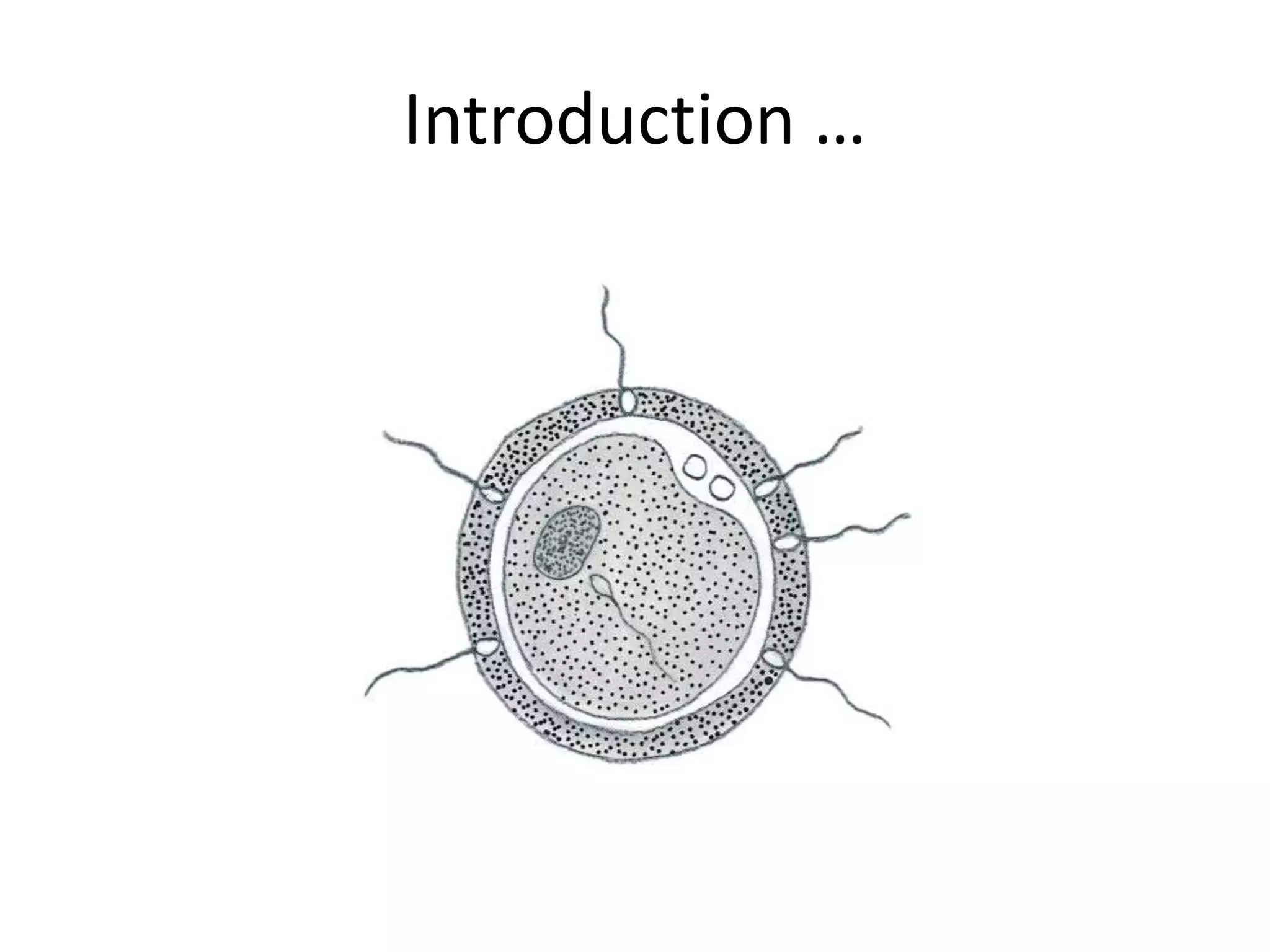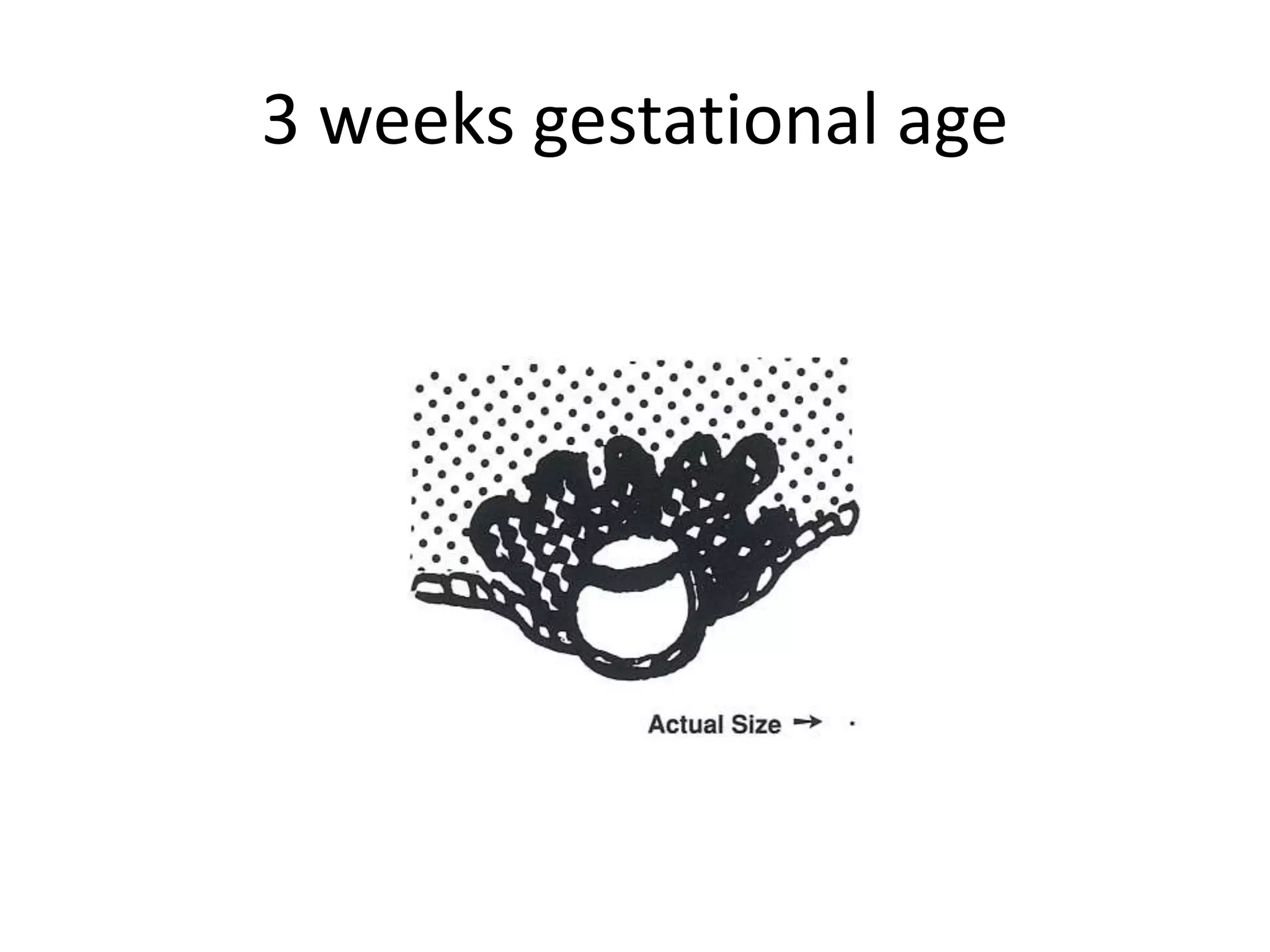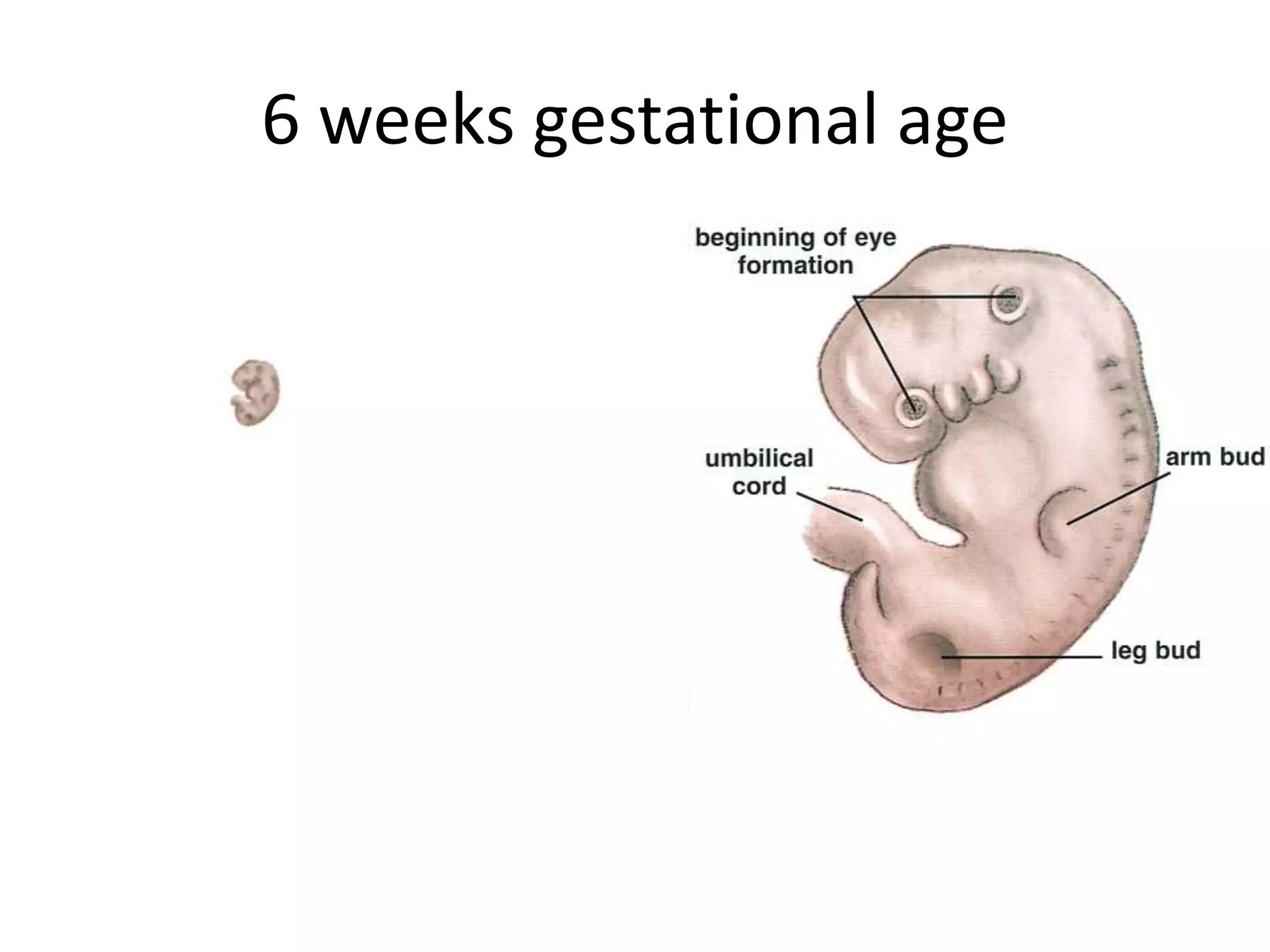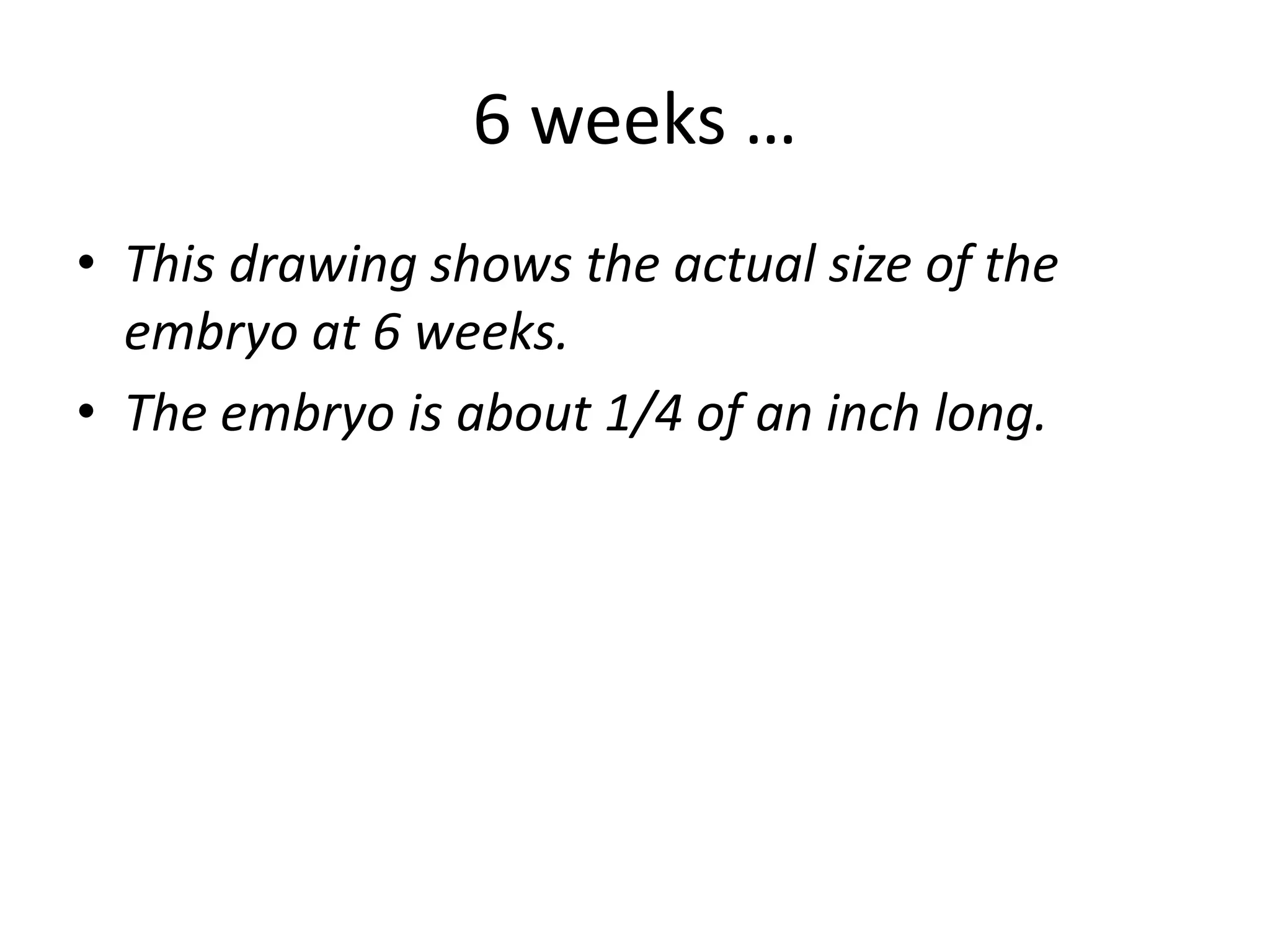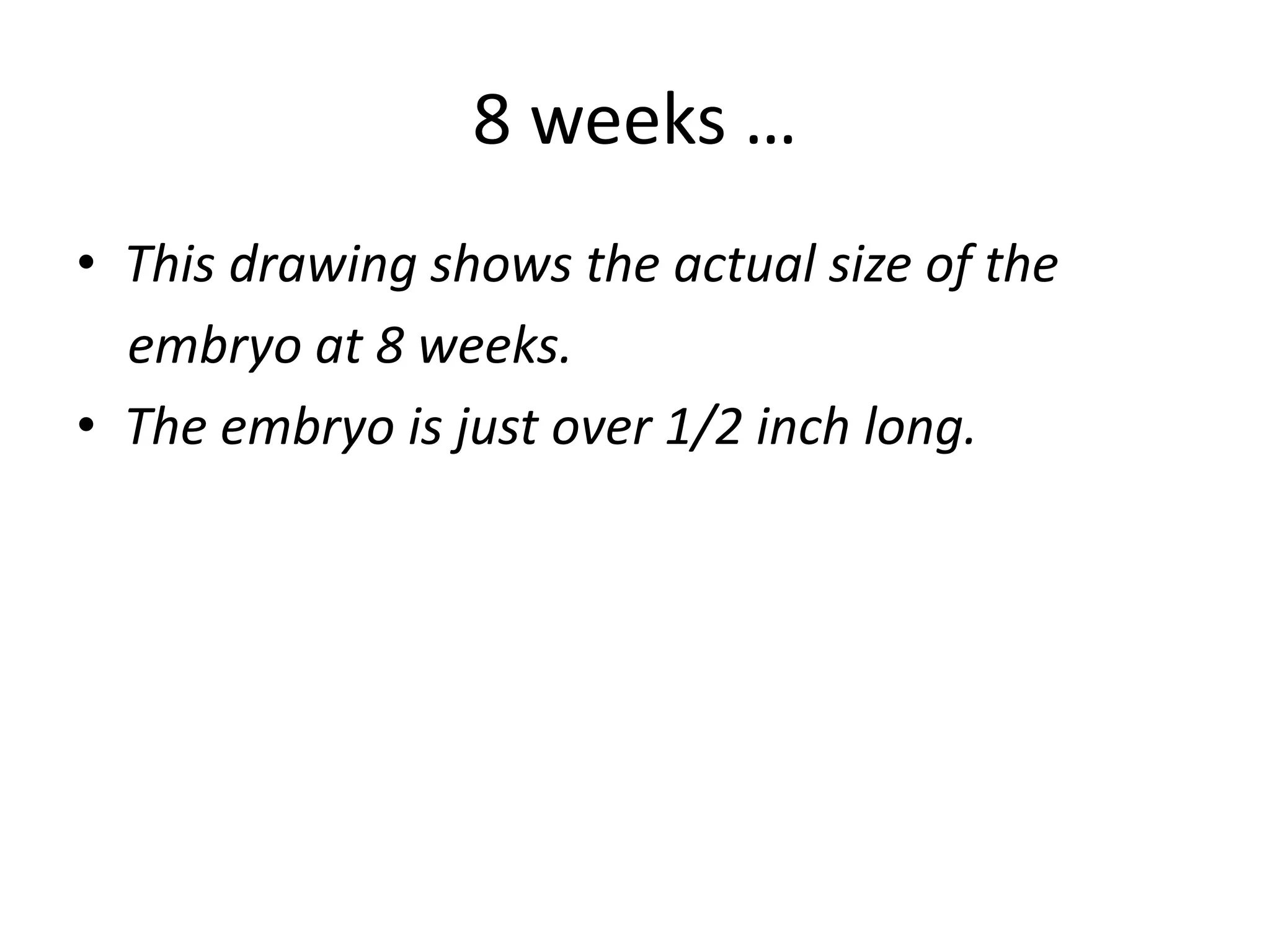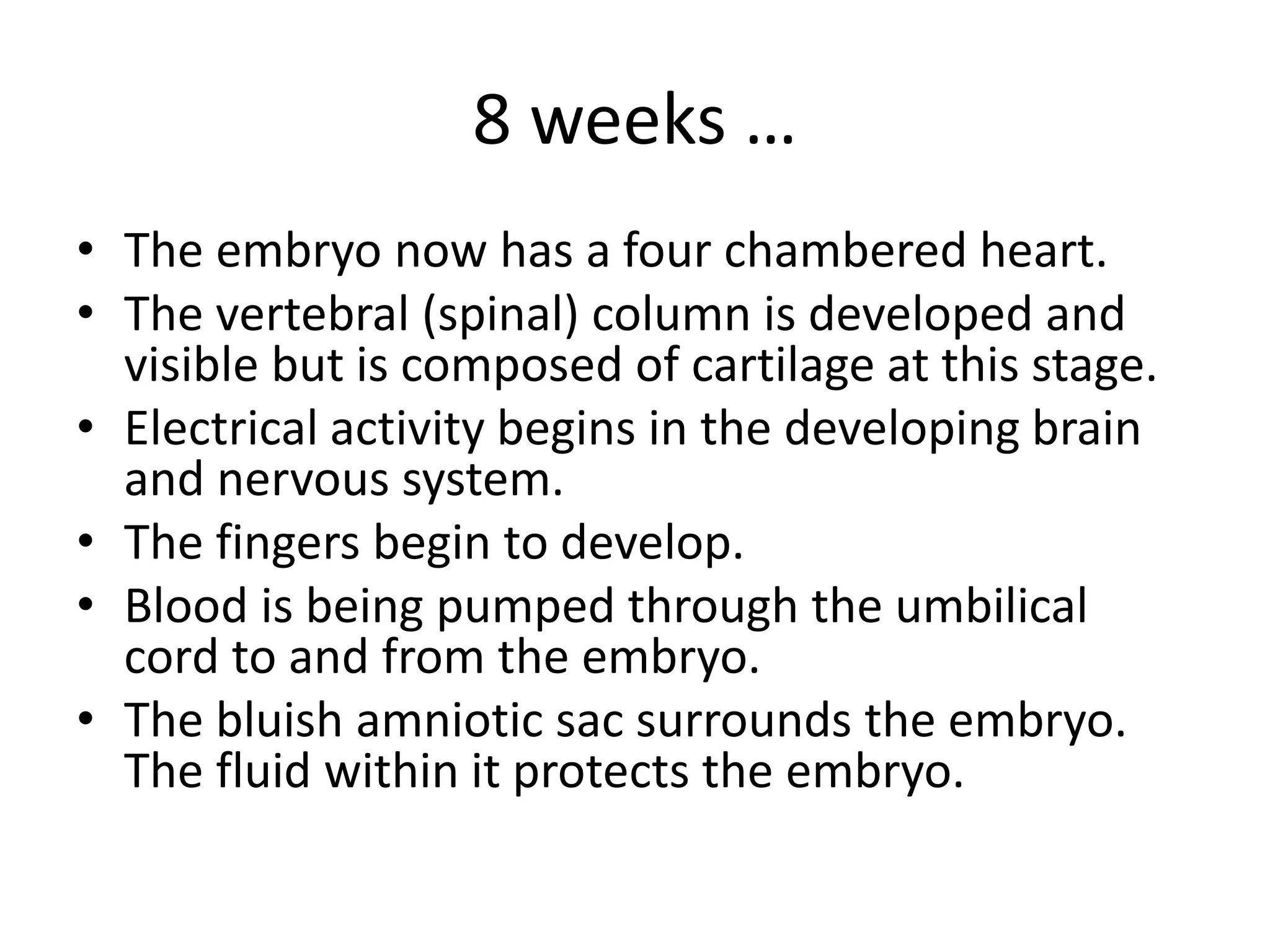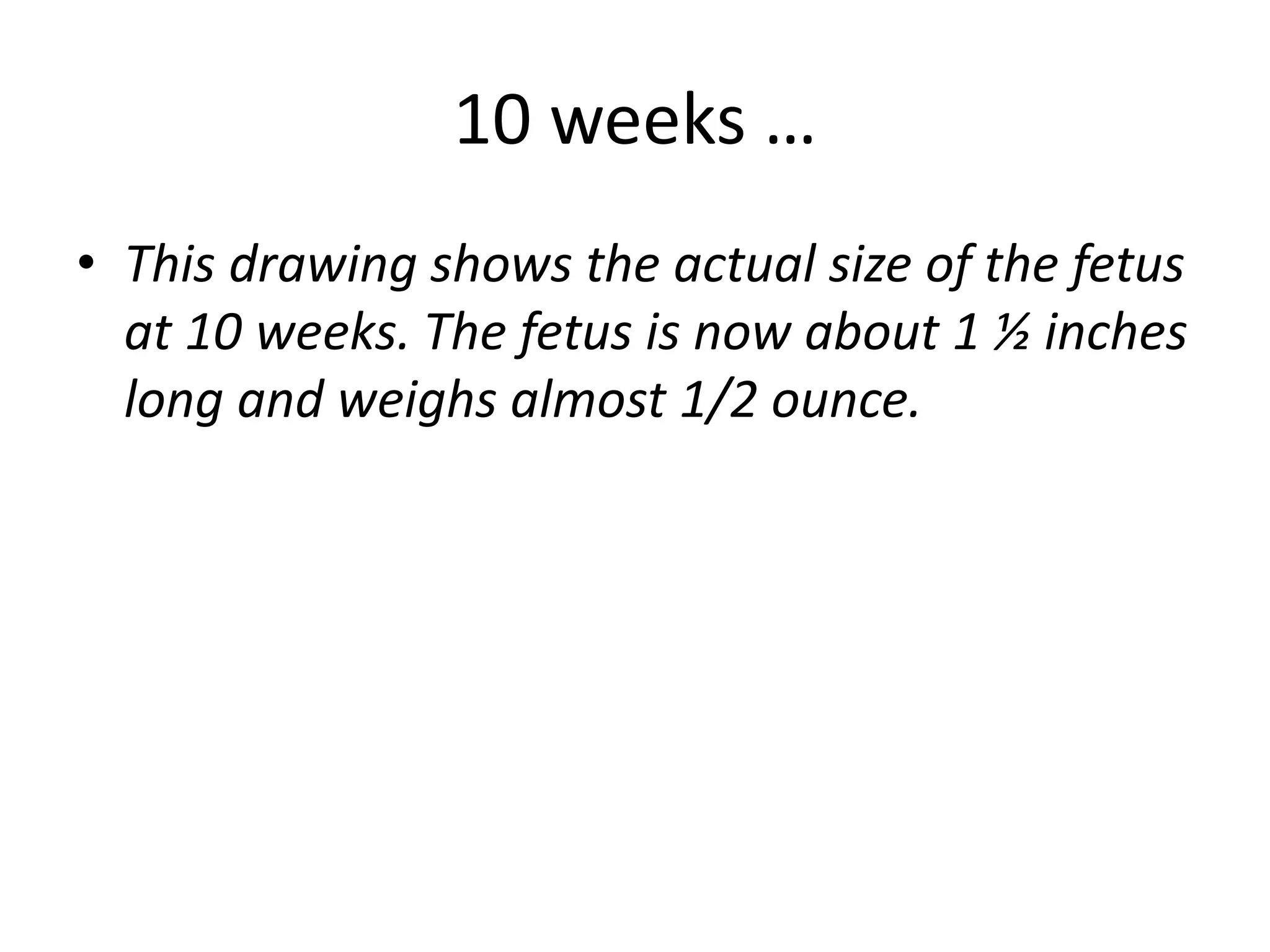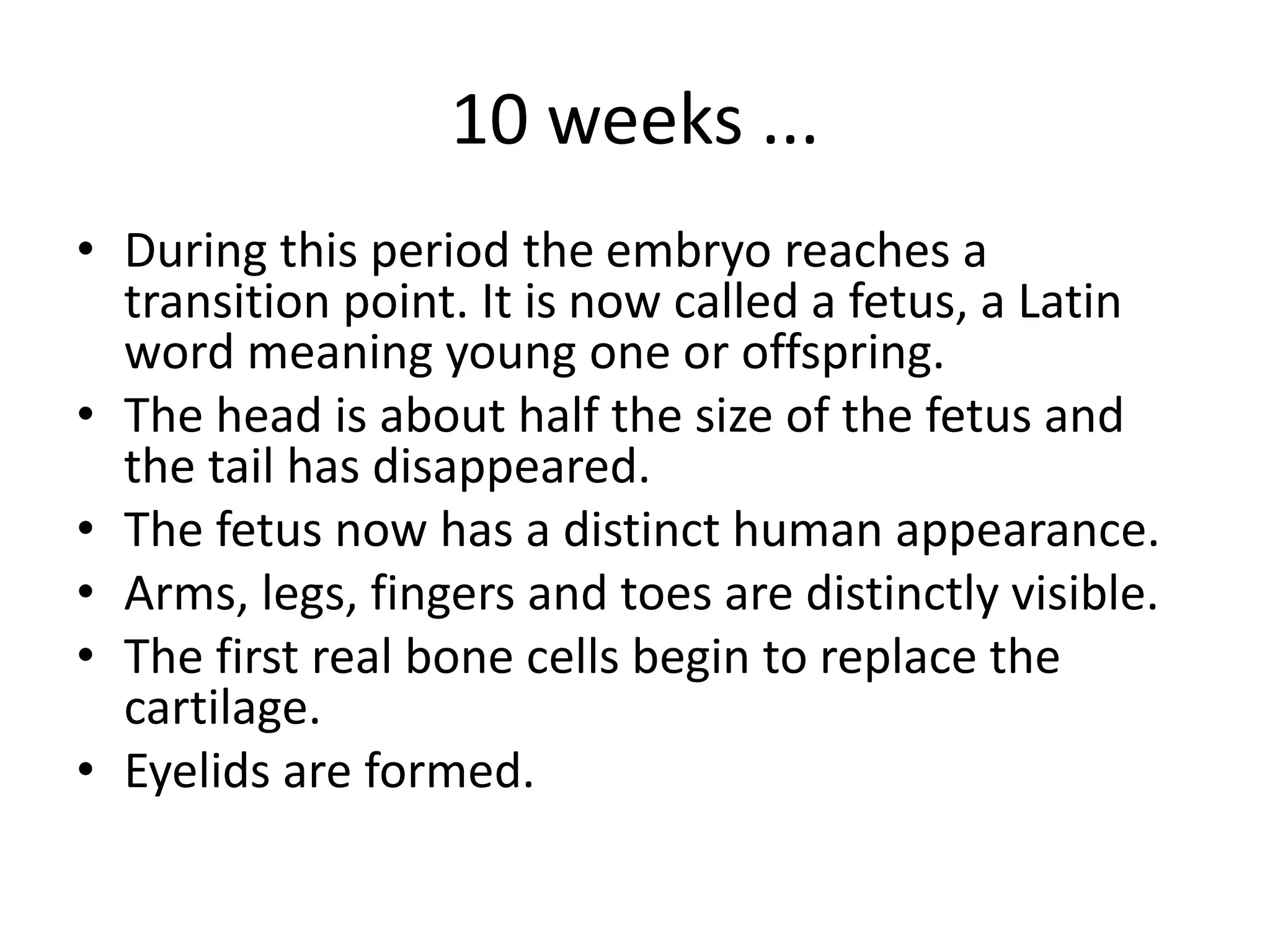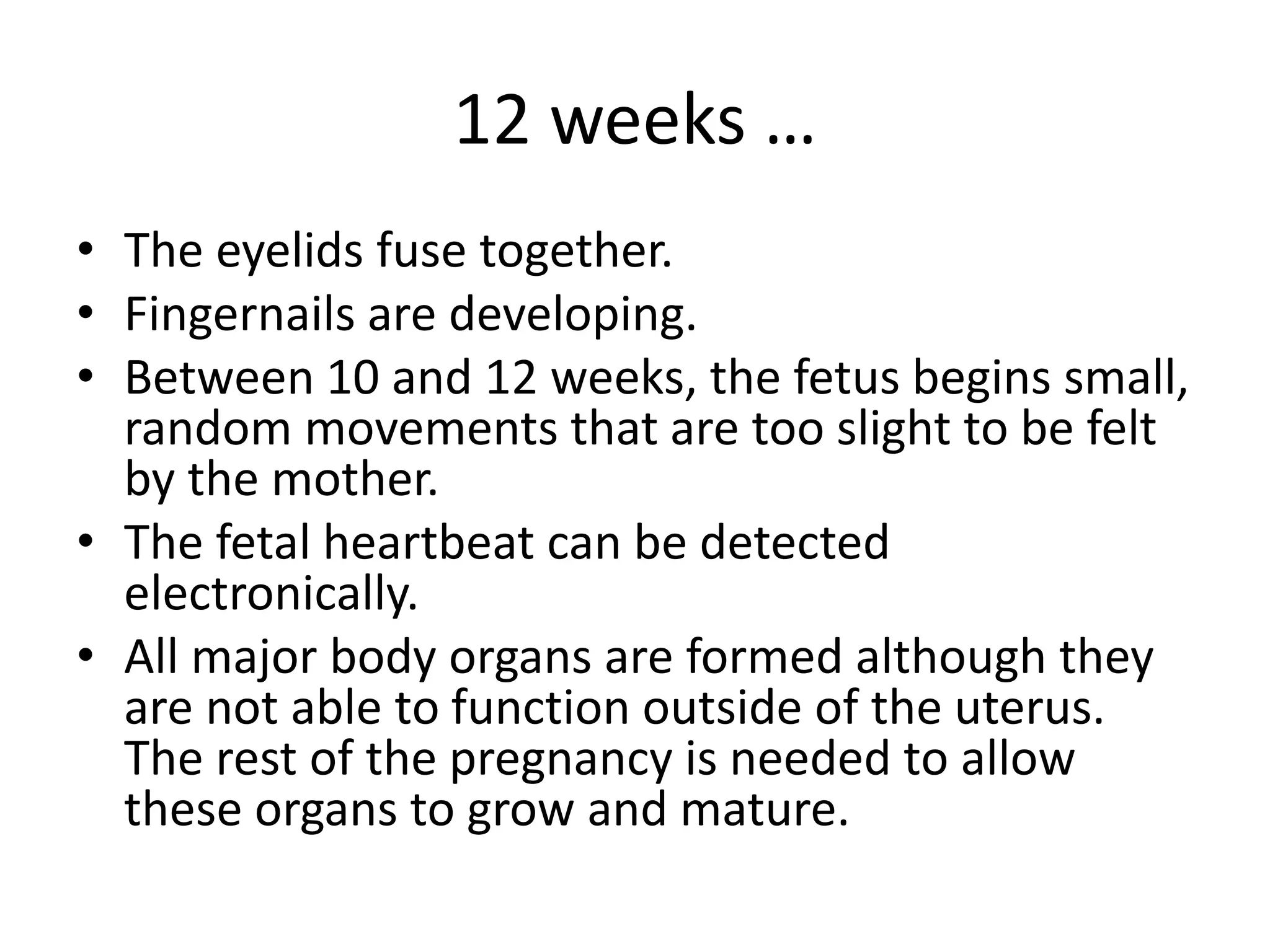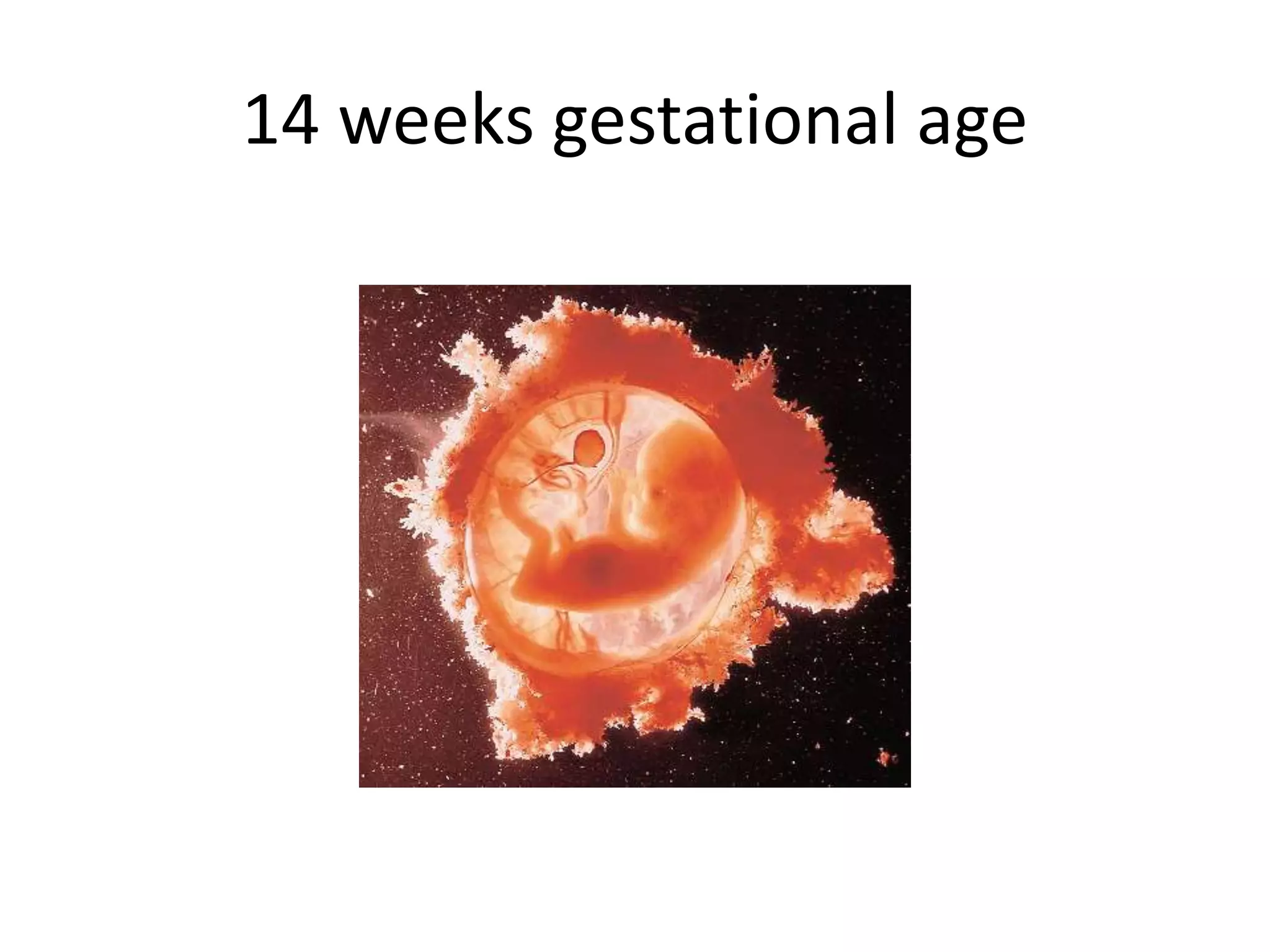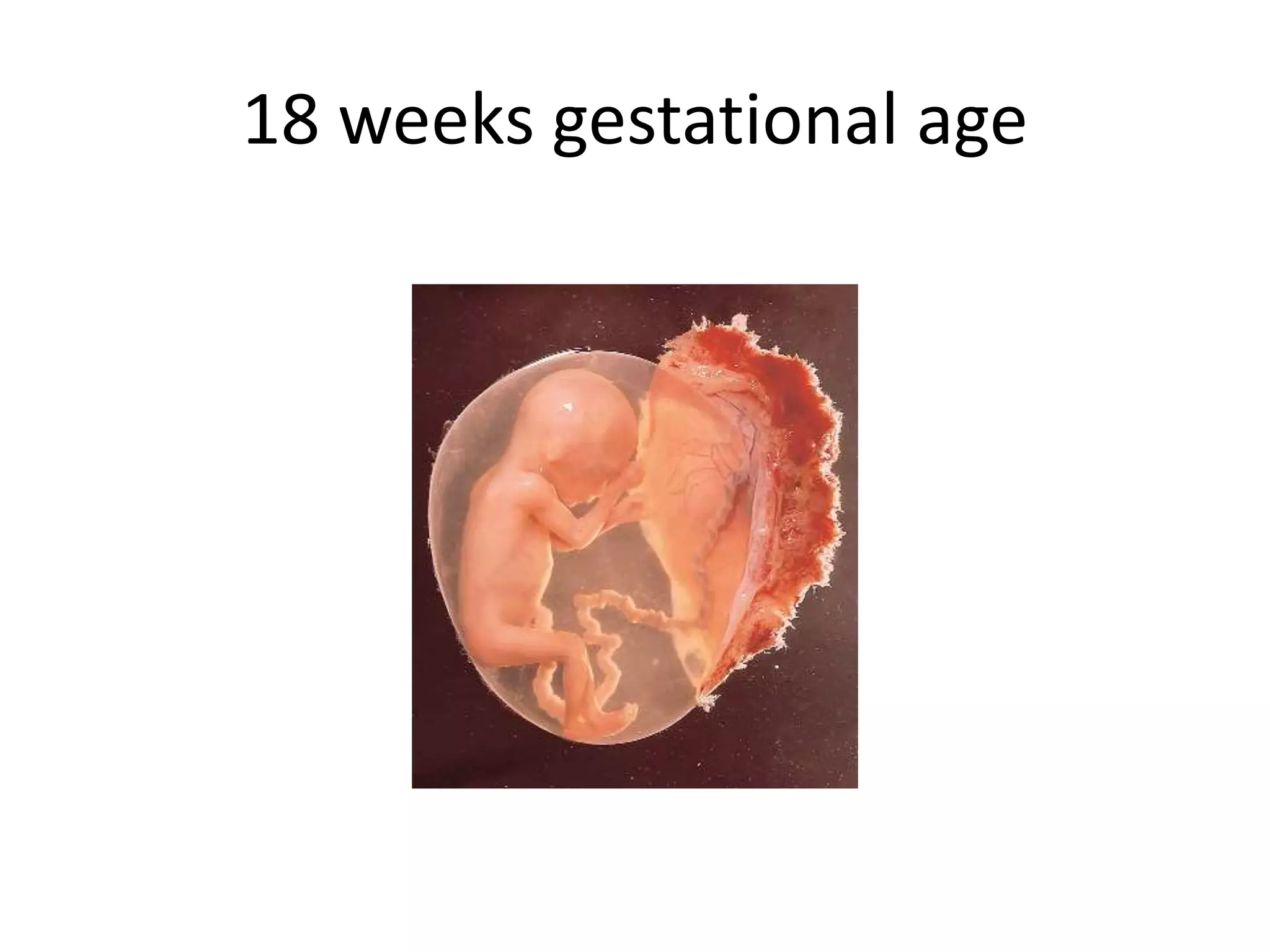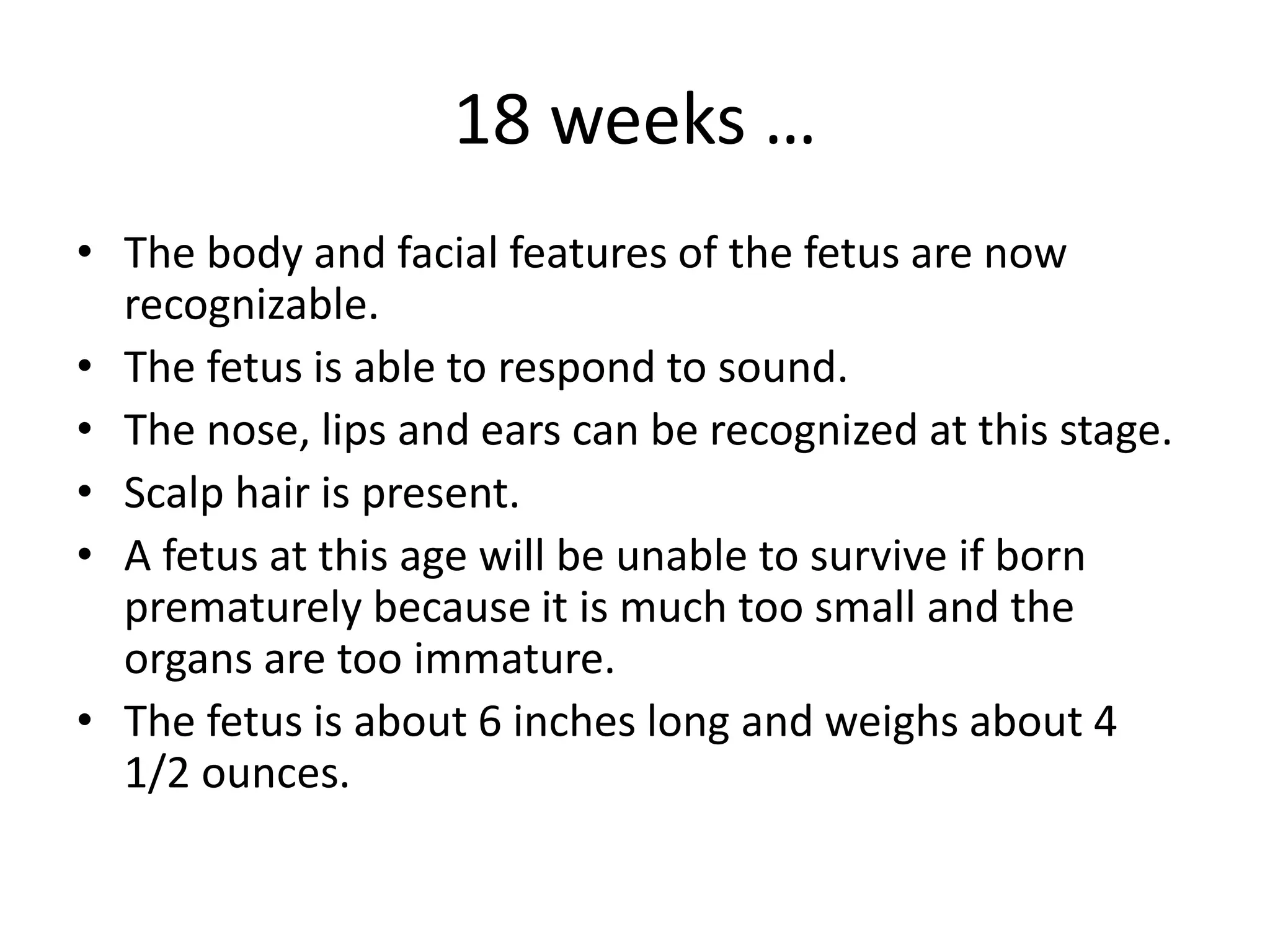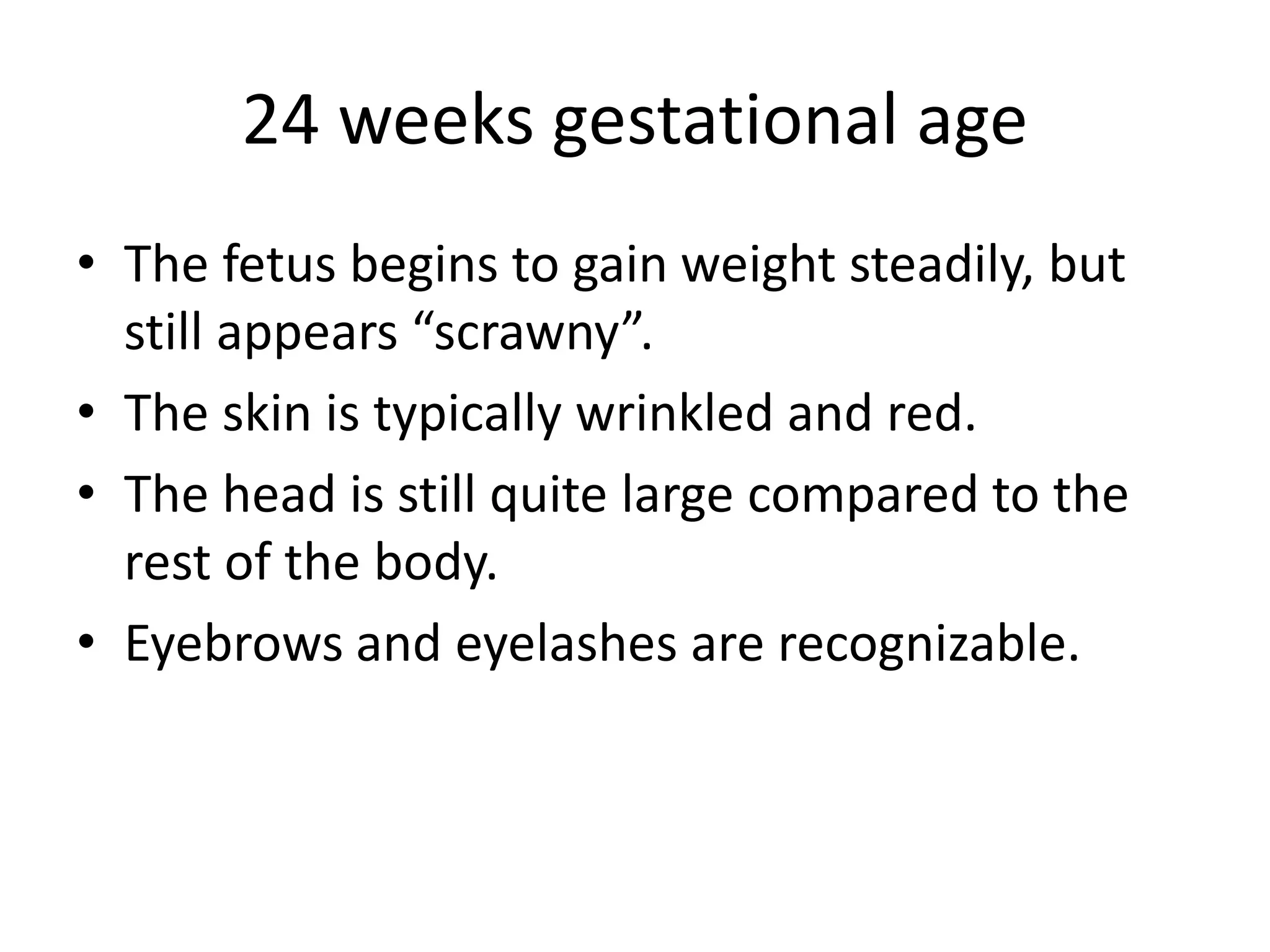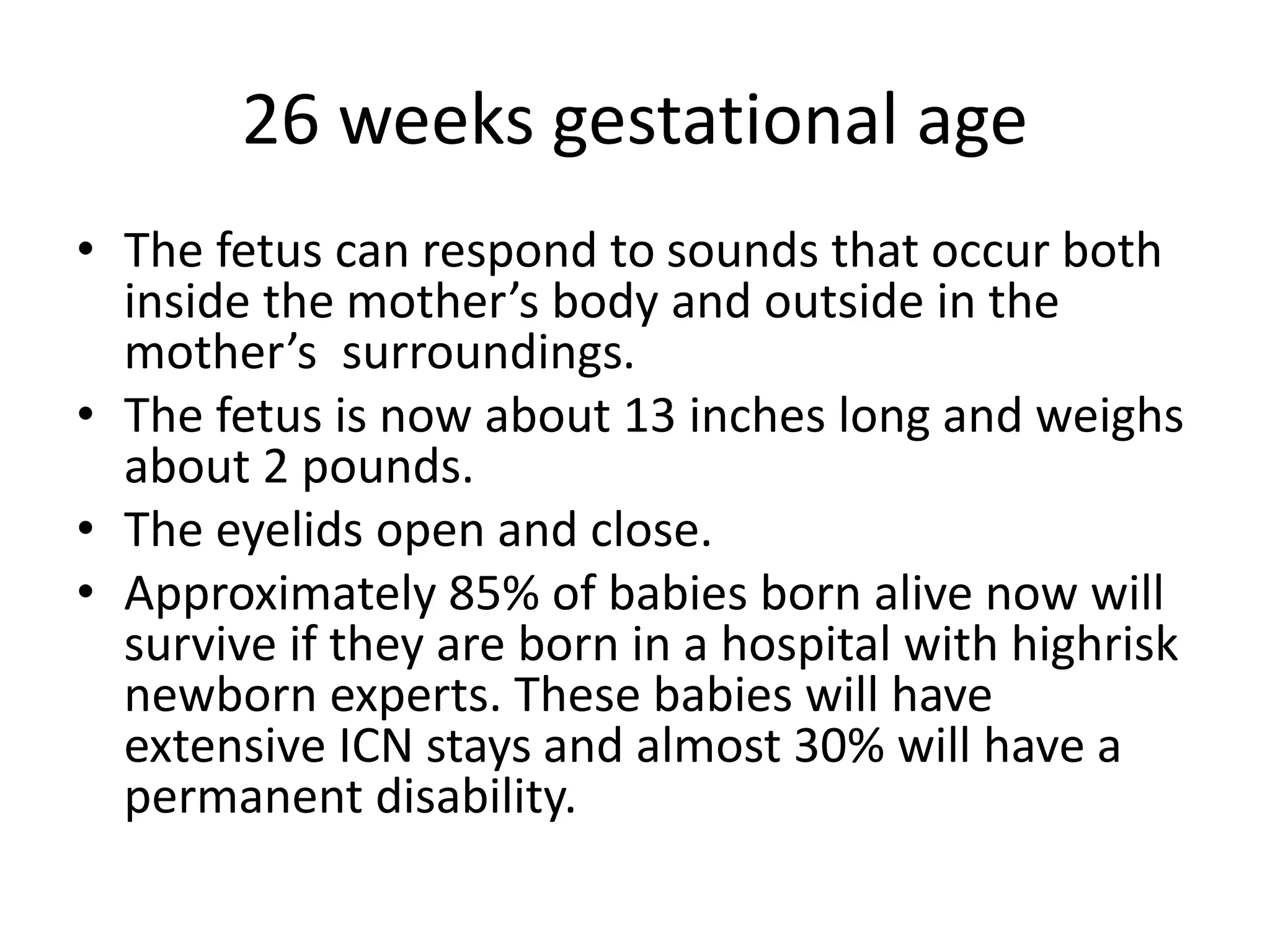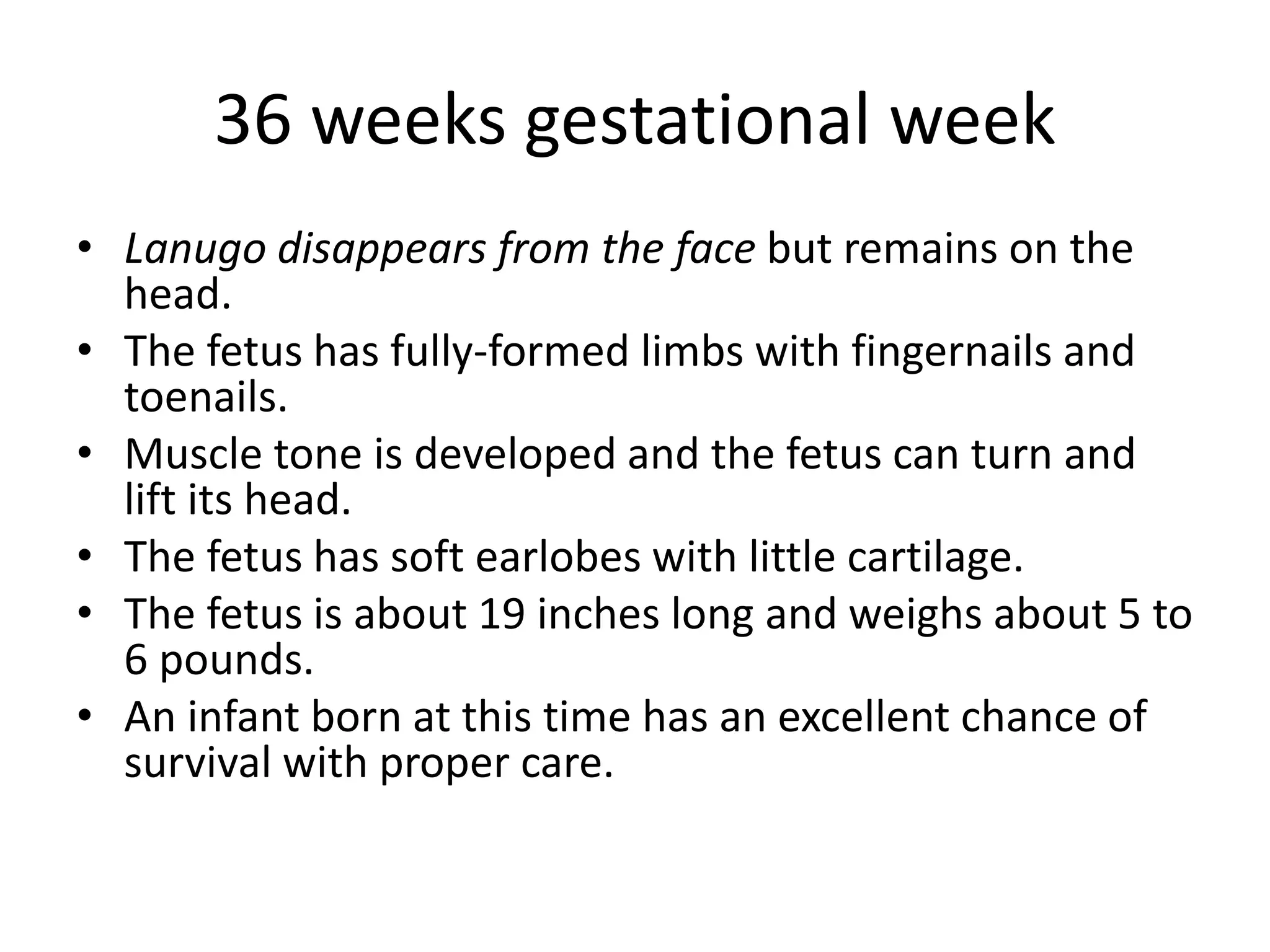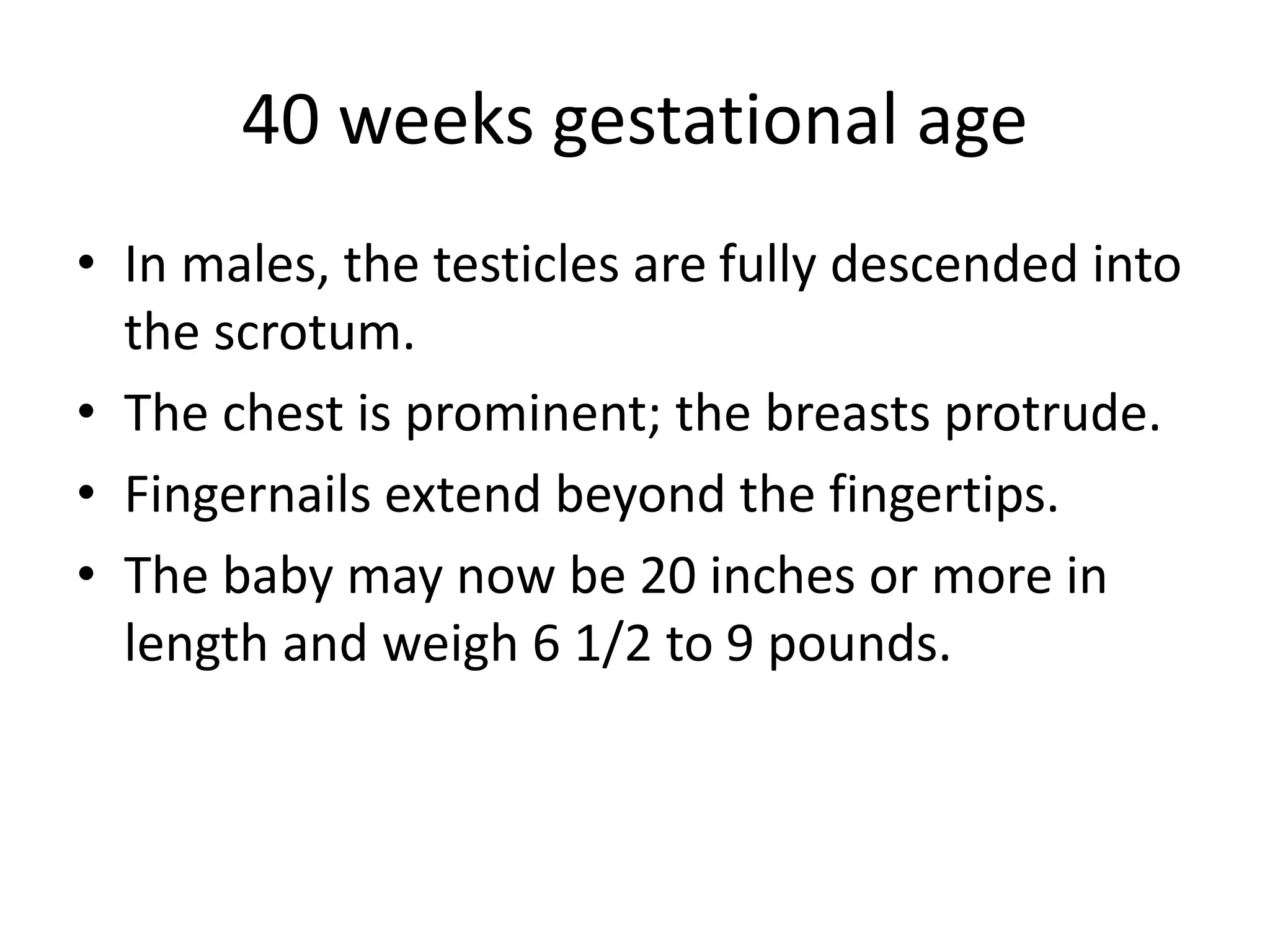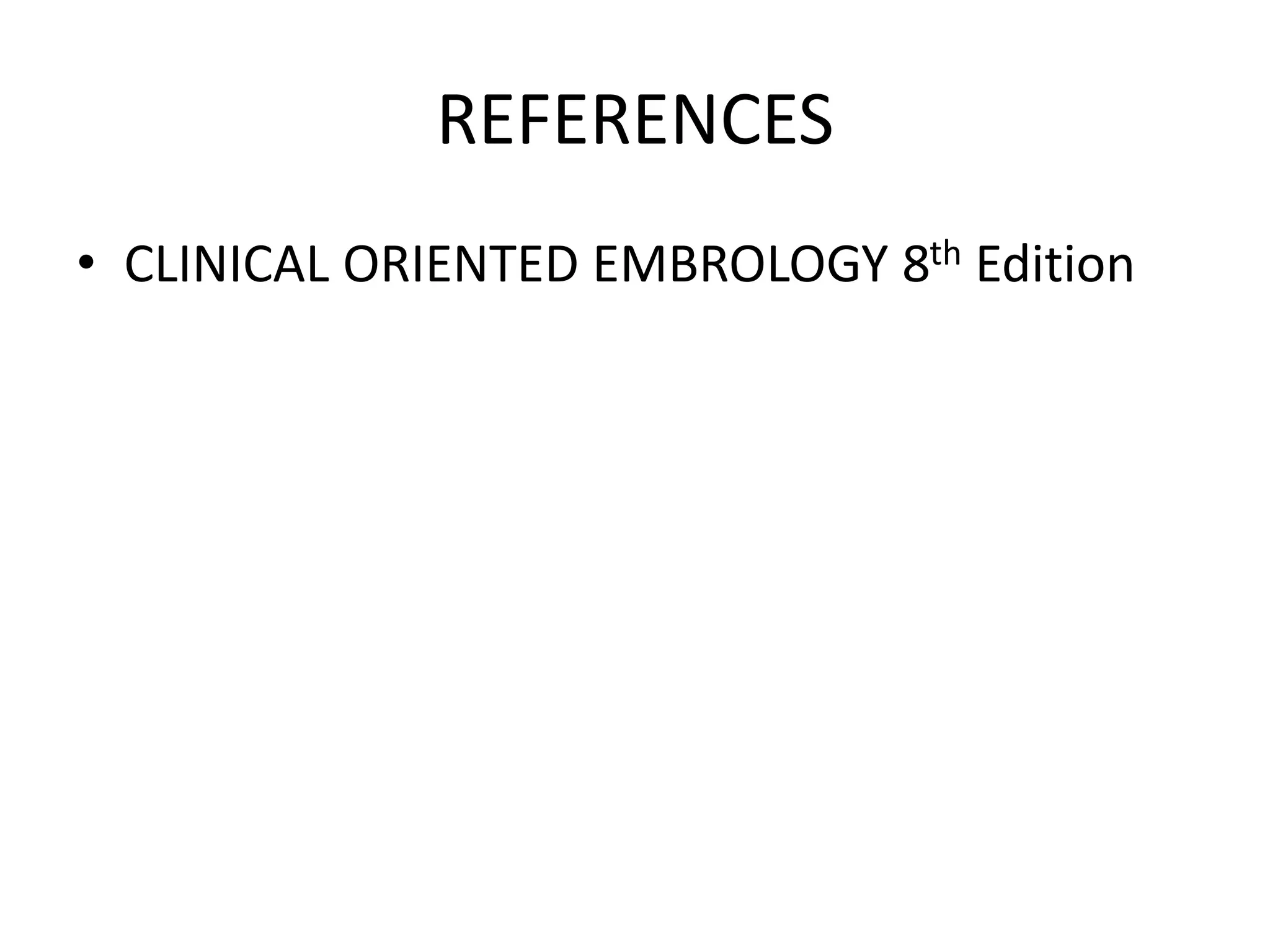The document summarizes fetal development from conception through 40 weeks of gestation. It describes the key physical changes that occur each week, including the formation of major organs in the first trimester and the rapid growth and physical maturation in the second and third trimesters. Survival rates for premature infants are provided for various gestational ages, showing a sharp increase in viability starting around 24 weeks of gestation. Diagrams accompany the text to illustrate the size and appearance of the developing fetus at different stages.



